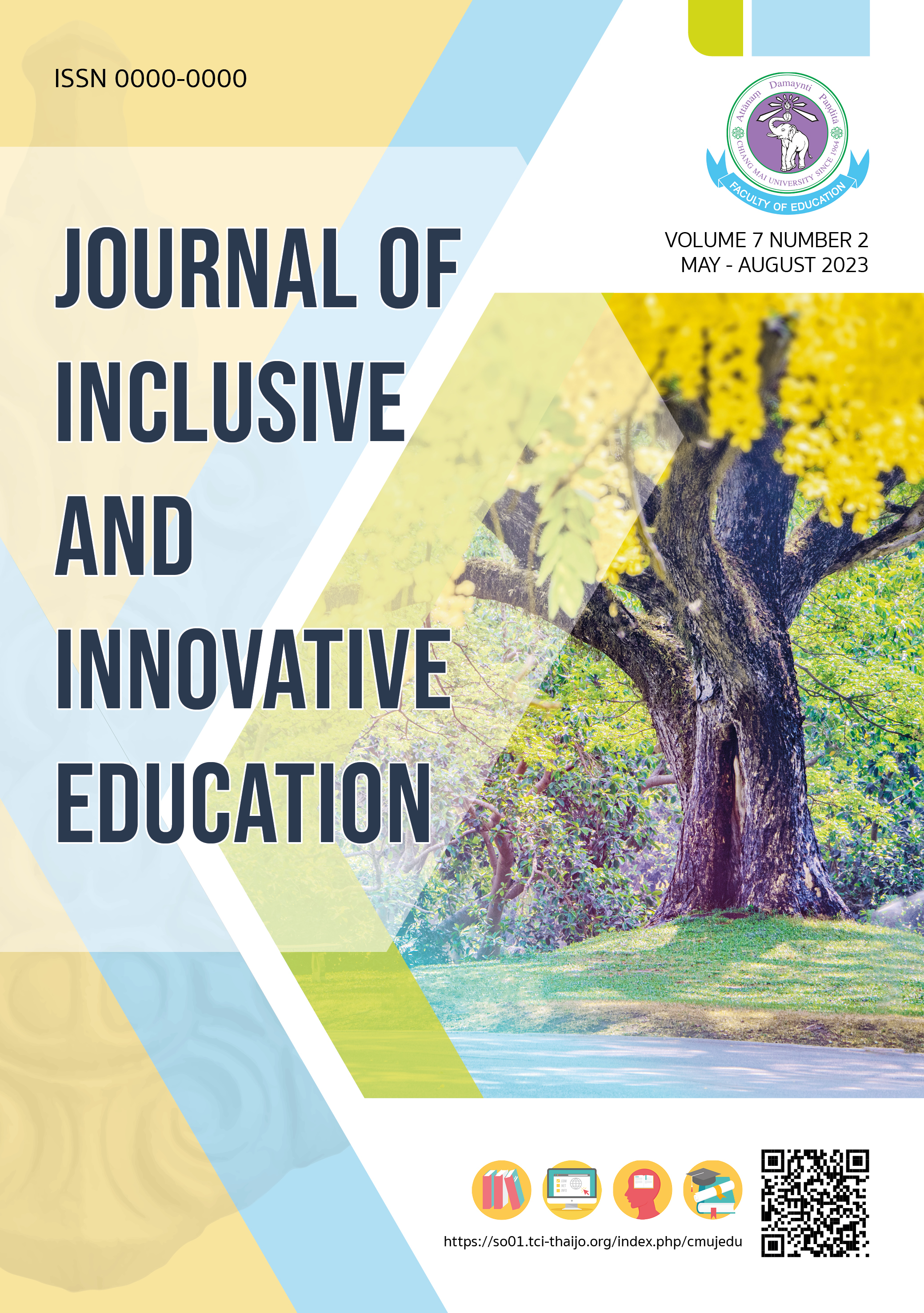The Effect of Techniques of Using for Diagnose Students’ Mathematical Proficiency Level Through Machine Learning
Main Article Content
Abstract
The objectives of this research were: (1) to compare the results of using a technique to diagnose students' mathematical proficiency through machine learning between students who received feedback and have not received feedback and (2) to develop a predictive model for diagnosing the level of Mathematics proficiency of students through machine learning. The results revealed that comparing the mathematical proficiency of students in the mathematical process dimension and the conceptual structure dimension between the control and experimental groups were significantly different at .01. Moreover, the predictive model test results of data classification techniques by using the WEKA program with a decision tree method found that at the level of the students' proficiency in the mathematical process dimension, the best algorithms and techniques are Random Tree and Random Forest algorithms by Percentage Split technique 70%. Besides, at the level of the students' proficiency in conceptual structure dimension, the best algorithm and technique is the J48 algorithm by percentage split technique 70%.
Article Details

This work is licensed under a Creative Commons Attribution-NonCommercial-NoDerivatives 4.0 International License.
หากผู้เสนอบทความมีความจำเป็นเร่งด่วนในการตีพิมพ์โปรดส่งลงตีพิมพ์ในวารสารฉบับอื่นแทน โดยกองบรรณาธิการจะไม่รับบทความหากผู้เสนอบทความไม่ปฏิบัติตามเงื่อนไขและขั้นตอนที่กำหนดอย่างเคร่งครัด ข้อมูลของเนื้อหาในบทความถือเป็นลิขสิทธิ์ของ Journal of Inclusive and Innovative Education คณะศึกษาศาสตร์ มหาวิทยาลัยเชียงใหม่
References
Allen, D. G. (2007). Student thinking. Retrieved from http://mtc.tamu.edu/9-12/index_9-12.htm?9-12M2L1.htm
Angsutharak, N.. (2020). Statistics and Machine Learning. Retrieved from https://sasinconsulting.com/wp-content/uploads/2020/02_by-Nattarat-Angsutrarux.pdf. [in Thai]
Fiothong, A., Junperng, P., Suwannatrai, P., Chinjunthuk, S.,Tawarungruang, C. (2022).Designing Open-Ended Question Scoring for Assessment of Student Mathematical Proficiency Levels Through Digital Technology. Journal of Educational Measurement, Mahasarakham University, 28, 346-362.
Han, J., Kamber, M. and Pei, J. (2012). Data Mining Concepts and Techniques. MA: Morgan Kaufmann.
Jantasuk, S. & Junpeng, P. (2020). Designing Automated Feedback System to Diagnose Students'
Mathematical Proficiency Level Through Digital Learning Platform. Journal of Research Methodology, 35(1), 23-45. [in Thai]
Junpeng, P. (2018). Applying for Multidimensional Item Response Theory:MIRT. KhonKaen: KhonKaen University Publishing. [in Thai]
Junpeng, P. et al. (2020). Developing students' mathematical proficiency level diagnostic tools through
information technology in assessment for learning report. Bangkok: Research Administration Division Khon Kaen University. [in Thai]
Kantahan, S., Junpeng, P., Punturat, S., Tang, K. N., P. Gochyyev., and Wilson, M. (2020). Designing and
Verifying a tool for diagnosing multidimensional scientific misconceptionss in genetics topic. International Journal of Evaluation and Research in Education, 9, 564-571.
Kolachalama, V. B., and Garg, P. S. (2018). Machine learning and medical education. Digital Medicine, 1, 1-3.
Masantiah, J. (2017). Development of a Computer-Based Testing System With Immediate Feedback For Different Student's Ability Levels : Application of Rasch Sirt Model. Bangkok: Chulalongkorn University. [in Thai]
Shute, V. J. (2008). Focus on Formative Feedback: Education Testing Service (ETS) research report. Princeton, NJ: Education Testing Service.
Van der Kleij, F. (2012). Towards effective feedback: an investigation of teachers’ and students’ perceptions of oral feedback in classroom practice. Assessment in Education: Principles, 27, 252-270.
Wongwanich, S.. (2020). DESIGN RESEARCH IN EDUCATION. Bangkok: Chulalongkorn University Press. [in Thai]

